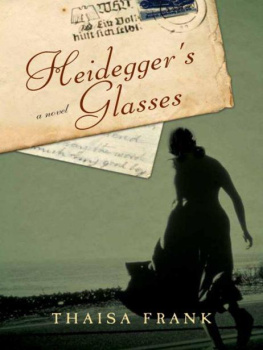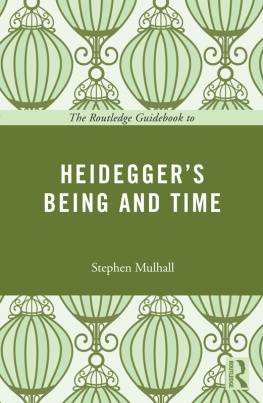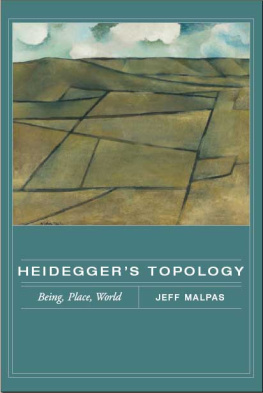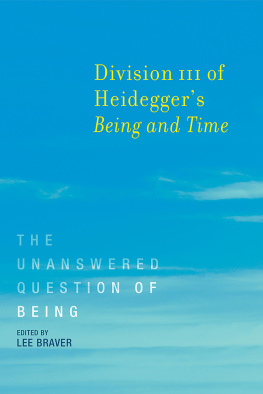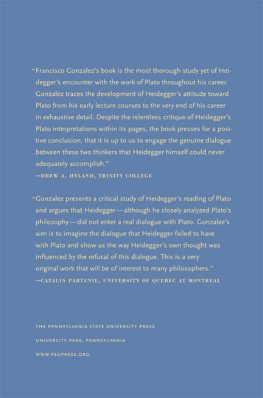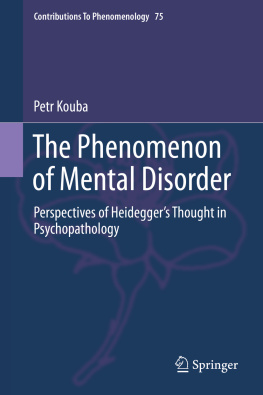Table of Contents
This book is dedicated to the memory of
Stanley Adlemantypewriter expert extraordinaire,
friend to innumerable writers
And to DS, Fred, and Ike Dude
Cross Section of Compound of ScribesHans Ewigkeit Architect 1941
Plan of Compound of ScribesHans Ewigkeit Architect 1941
CURATORS NOTES
This exhibit of letters dates roughly from 1942 to the end of WWII. Most are letters written under coercion as part of a program called Briefaktion , or Operation Mail. Some are letters from ghettos or notes passed between prisoners in barracks at concentration camps. The letters from Operation Mail illuminate German WW II strategies that are often obscured by more historical and dramatic events.
OPERATION MAIL OR BRIEFAKTION
Briefaktion was created to assure anxious relatives about the relocations and deportments, as well as dispel rumors about the Final Solution, which the Reich at all costs wanted to keep secret. The letters were usually written as soon as prisoners arrivedoften before they were led to an idyllic woods or corridor of pine boughs that concealed gas chambers. The letters werent mailed directly to their recipients, but from an office in Berlin called The Association of Jews, making it impossible to know their origin. Answers were sent back to Berlin and rarely delivered; but most couldnt have been read because a majority of the letter writers had already been killed. The result was enormous quantities of unread mail, some of which were retrieved after the war.
THE SUPERNATURAL AND THE THULE SOCIETY
It was widely known that Hitler consulted astrologers. Far less known is the fact that the Reich placed astounding reliance on the supernatural for strategies about the war and the Final Solution. A group called Die Thule-Gesellschaft (The Thule Society), comprised of mystics, psychics, members of the Reich, and select SS men, met regularly to channel advice from the astral plane. The Thule Society got its name from Lanz von Liebenfelss concept of Ultima Thule, a place of extreme cold where a race of supermen lived. Hitler didnt attend these meetings and prevented Liebenfels from publishing after he came into power, probably to conceal his own fascination with Ultima Thule. Heinrich Himmler (who allegedly carried a copy of The Bhagavad Gita with him everywhere to relieve his guilt about the war) was the Thule Societys most prominent member. Messages thought to come from the astral plane were incorporated into the Reichs strategies. Although he avoided the Thule Society, Hitler relied on numerous mystics, astrologers, and clairvoyants for support and advice. The most famous is Erik Hanussen, who taught Hitler to hypnotize crowds.
JOSEPH GOEBBELS AND THE PARADOX OF PROPAGANDA
On April 30th, just before he committed suicide, Hitler made Goebbels Reich Chancellor. But Goebbels held this position for just one day. When the Russians refused a treaty that was favorable to the Nazi Party, Goebbels followed Hitler in suicide, along with his wife and six children. With Goebbelss death, the Nazi Regime lost its voice. Goebbels was a brilliant oratorhumorous, sarcastic, and detached. His famous motto was: If you want to tell a lie, tell a big lie. Goebbels was skilled at hiding the Reichs reliance on the occulta reliance he didnt share. He was openly contemptuous of Himmlers obsession with the supernatural and may have been a key influence in dissuading Hitler from joining the Thule Society. He was far less successful in hiding the Final Solution. Many Germans were convinced by Goebbelss propaganda; others, however, knew about the camps as is evident by Germans in the Resistance, people in the Nazi Party who used their influence to save Jews, and the White Rose Party, a radical student group that distributed pamphlets about the camps.
MARTIN HEIDEGGER AND WORLD WAR II
Among Germans who denied any knowledge of the Final Solution was the philosopher Martin Heideggeran enigmatic figure during the Nazi regime. In 1933, he became a member of the Party and was appointed Chancellor of the University of Freiburg. A year after he assumed the Chancellorship, he resigned. Some Party members who viewed Heidegger as a rival resented the Chancellorship. Others thought his philosophy was gibberish. And Heidegger himself believed Germany was betraying its promise to return to its cultural roots. His criticisms of the Party were vociferous; on the other hand, he never resigned from or denounced the Party, even in an evasive, posthumous interview published by Der Spiegel .
Heideggers affiliation with the Party has generated heated discussions about whether there are Nazi doctrines in his philosophy. Some philosophers feel there is clear evidence of this and often refer to a famous conversation with Karl Lwith before the war where he claimed that one of his most important ideas (historicity) was the foundation for his political involvement. Other philosophers think that Heidegger was simply incapable of integrating his philosophy and his politics and see much revisionism in the views he expressed. Heidegger is still acknowledged as having great influence on modern philosophical thought, as well as on poetry and architecture. Ironicallygiven his affiliations with views driven by chauvinismhe raised cogent questions about the nature of existence, the nature of herd mentality, and the nature of thought itself. He also wrote and spoke with great sophistication about the human impulse to avoid knowledge of mortality. Over ten years before the Reich came into power, Heideggers own eyeglasses were one of several catalysts for a revelation about this aspect of human existence, and he mentioned them in his seminal work, Being and Time .
Zo-Eleanor Englehardt, Guest Curator,
The Museum of Tolerance, New York City, New York
PROLOGUE

In the ordinary winter of 1920, the philosopher Martin Heidegger saw his glasses and fell out of the familiar world. He was in his study at Freiburg, over one hundred and sixty kilometers south of Berlin, looking out the window at the thick bare branches of an elm tree. His wife was standing next to him, pouring a cup of coffee. Sunlight fell through the voile curtains, throwing stripes on her crown of blond braids, the dark table, and his white cup. All at once a starling crashed against the window and dropped to the ground. Heidegger reached for his glasses to look and as he leaned over, the coffee spilled. His wife cleaned the table with her apron while he cleaned the glasses with his handkerchief. And all at once, he looked at the thin gold earpieces and two round lenses and didnt know what they were for. It was as though hed never seen glasses or knew how they were used. And then the whole world became unfamiliar: The tree was a confusion of shapes, the blood-spattered window a floating oblong. And when another starling flew by, he saw only darkness in motion.
Martin Heidegger didnt mention this to his wife. Together they cleaned and muttered. She brought more coffee and left the room. Heidegger waited for the world to fall back into place and eventually the ticking belonged to the clock again, the table became a table, and the floor became something to walk on. Then he went to his desk and wrote about this moment to a fellow philosopher named Asher Englehardt. Even though they often met for coffee, they enjoyed writing to each other about tilted moments: The hammer thats so loose its head flops like a bird. The picture thats crooked and makes the room seem uncanny. The apple in the middle of the street that makes you forget what streets are for. The thing made close because its seen at a distance. The sense of not being at home. Falling out of the world.






